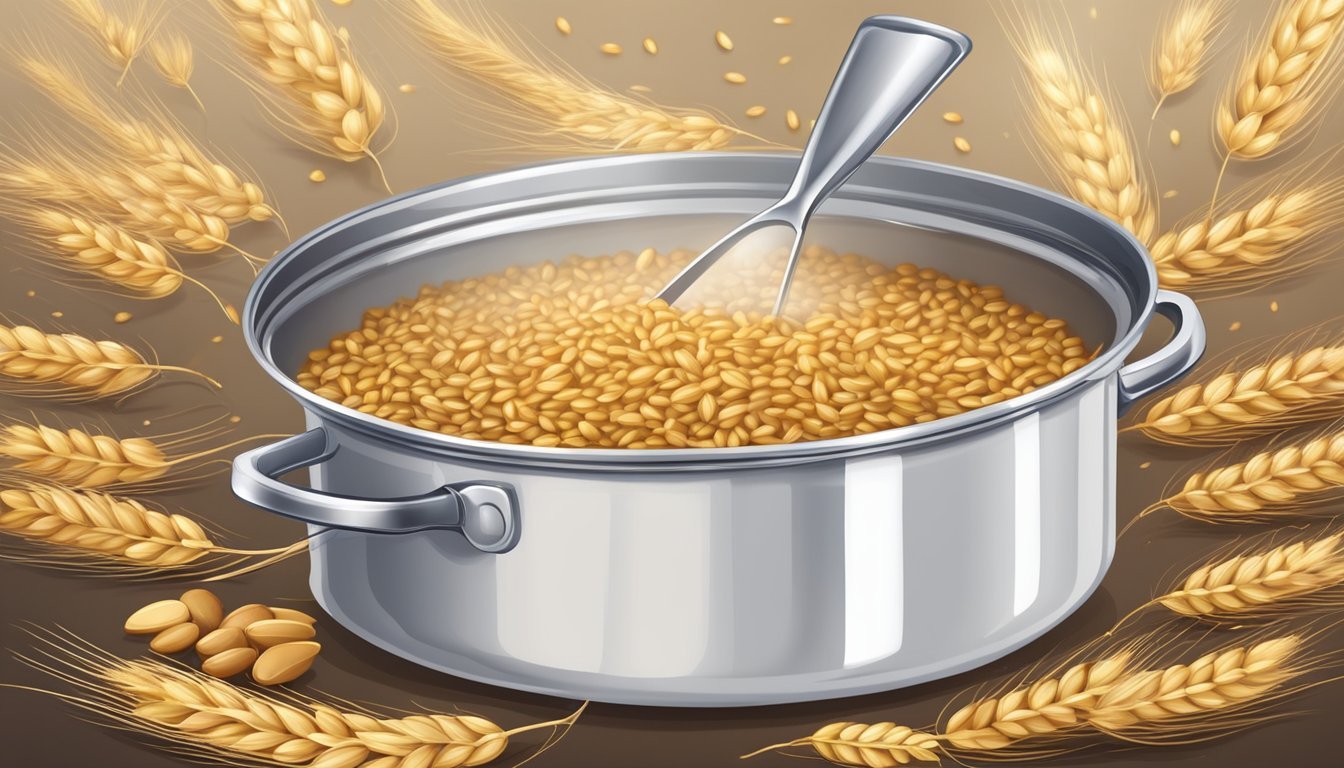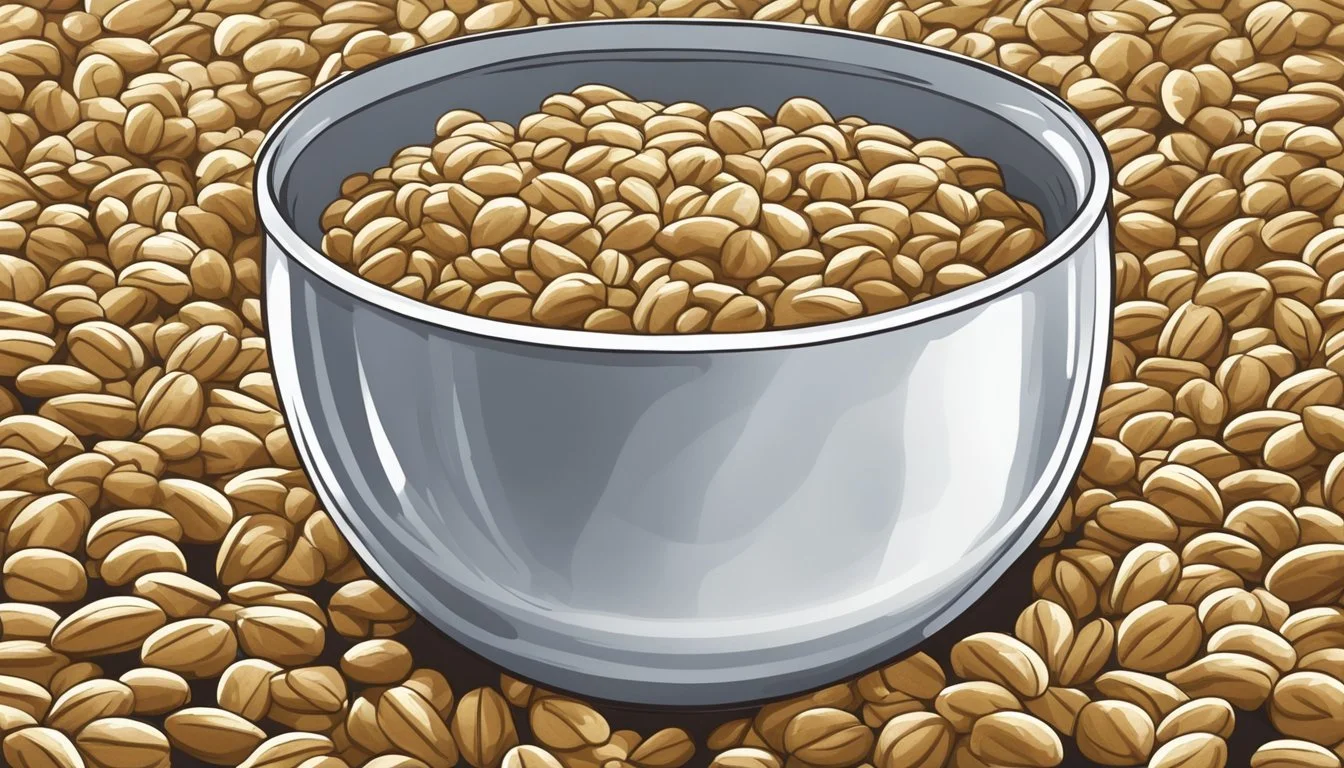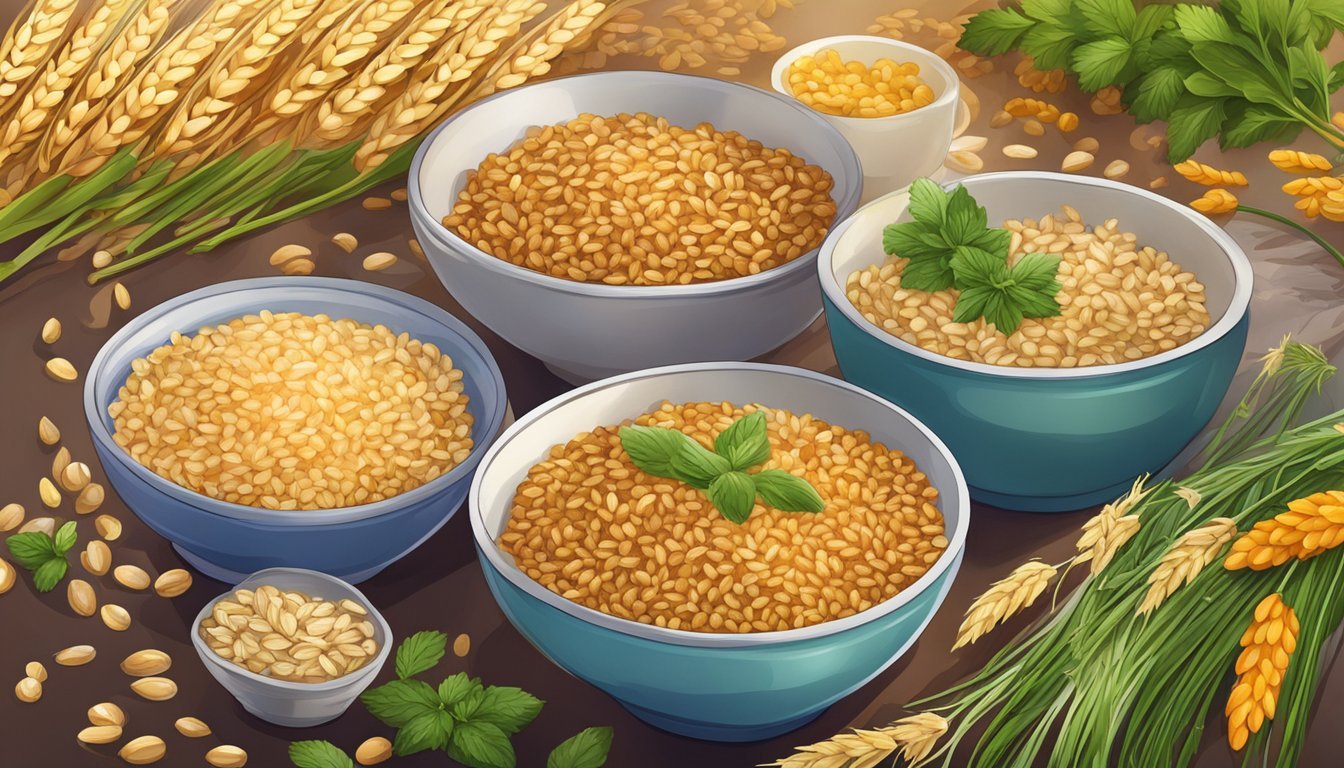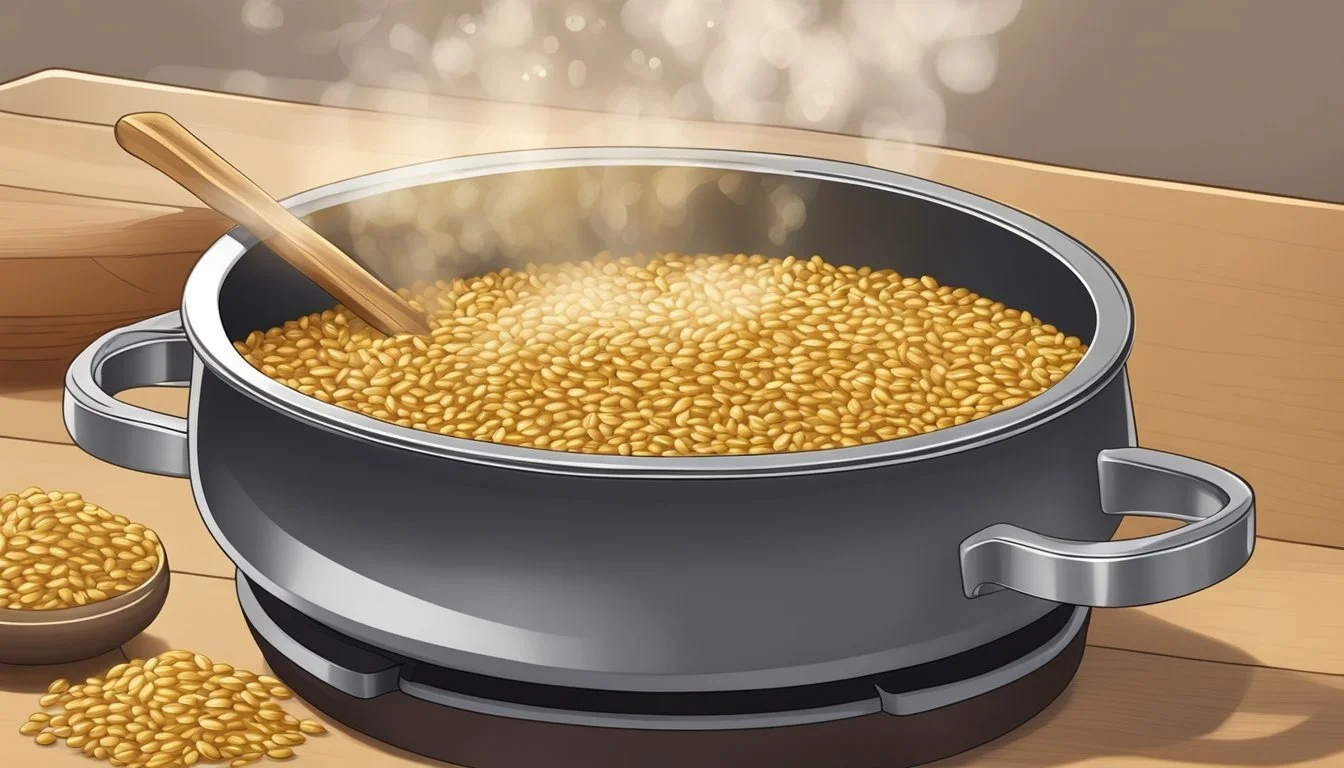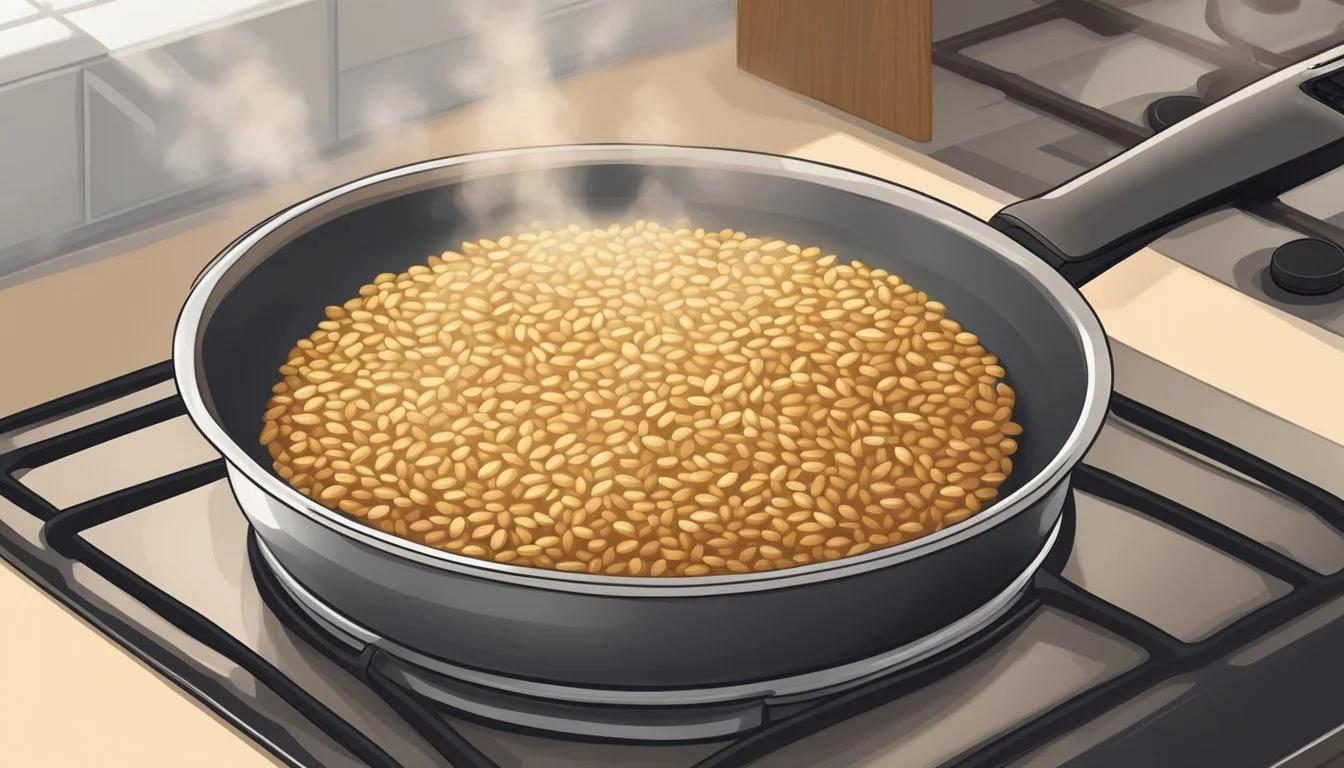Saving Overcooked Barley
Tips for Revitalizing Your Grain Dishes
Barley, with its nutty flavor and chewy texture, is a versatile grain that does wonders in a variety of dishes from soups to salads. However, even experienced cooks can sometimes end up with overcooked barley, which can lead to a mushy and less appealing consistency. The good news is that overcooked barley doesn't have to be wasted. With a few clever tricks and adjustments, it is possible to salvage the grain and transform it into something delicious.
Overcooking often occurs when barley is left to cook for too long or at too high of a temperature. It absorbs a lot of water, becoming too soft and losing its characteristic bite. While prevention is the best strategy, sometimes attention lapses or distractions happen. When that moment arises, it's important to know how to save the grain without having to discard it. It's all about finding the right recipes and techniques that can accommodate or even benefit from barley's softer texture.
Incorporating overcooked barley into dishes where it can blend seamlessly with other ingredients is a smart way to give it new life. Since it has absorbed extra liquid, one can reduce or even skip the added liquids in recipes like stews (What wine goes well with stews?) or casseroles. The goal is not only to avoid waste but also to delight in creating a dish that's still rich in flavor and texture, turning an overcooking mishap into an opportunity for culinary creativity.
Understanding Barley
Barley is an ancient cereal grain known for its versatility and health benefits. It plays a pivotal role in diets around the globe due to its dense nutritional profile and distinct nutty flavor.
Types of Barley
Hulled Barley: This whole grain has only the outermost hull removed, retaining most of its bran and germ, making it a rich source of fiber and nutrients.
Pearl Barley: With both the hull and bran layers removed, pearl barley cooks faster and has a softer texture, but it contains fewer nutrients than hulled barley due to the removal of the bran.
Nutritional Profile of Barley
Barley is a nutrient-dense food, high in both soluble and insoluble fiber, which can aid in maintaining healthy cholesterol levels. It is relatively high in protein, contributing to muscle maintenance and repair. Barley also offers a variety of vitamins and minerals including B vitamins, iron, magnesium, and selenium. However, it is important to note that barley contains gluten, making it unsuitable for those with gluten intolerance or celiac disease.
Nutritional Highlights of Barley (per 100g of cooked hulled barley):
Energy: 123 kcal
Protein: 3.5 g
Fiber: 3.8 g
Carbohydrates: 28.22 g
Includes a range of B vitamins, Iron: 1.29 mg, Magnesium: 32 mg, Selenium: 9.1 µg
Barley in Different Cuisines
Barley has a long history in various culinary traditions, appreciated for its hearty, chewy texture and nutty taste. In European cuisine, barley is often used in soups and stews. Middle Eastern dishes sometimes include barley as a base for pilafs or as an ingredient in salads like tabbouleh. Meanwhile, Asian cuisines incorporate barley in sweet desserts, tea and traditional drinks, demonstrating its broad culinary range.
Preventing Overcooking
Key factors to ensure perfectly cooked barley include choosing the correct variety, accurate water-to-barley ratios, and adhering to optimal cooking times and methods. These critical aspects help maintain the grain's texture and flavor, preventing the common pitfall of overcooking.
Selecting the Right Barley
Different types of barley have distinct cooking times and textures. Pearl barley, being more processed, has had its outer husk and bran layers removed, thus requiring less cooking time. On the other hand, hulled barley retains more of its bran layer and thus needs a longer cooking period to reach a tender state. For dishes that require a shorter cook time, pearl barley is the preferred choice.
Water-to-Barley Ratios
The ideal water-to-barley ratio is crucial in cooking barley correctly on the stovetop. As a standard guideline:
Pearl barley: 1 part barley to 2.5 parts water
Hulled barley: 1 part barley to 3 parts water
Measure the water and barley accurately before combining them in the pot. Too much water can lead to overcooking and a mushy texture, while too little might result in undercooked grains.
Cooking Times and Methods
Barley should be simmered until it's tender but still has a slight chewiness. Here are the typical cooking times:
Pearl barley: Simmer for approximately 25 to 30 minutes
Hulled barley: Simmer for about 45 minutes to 1 hour
The cooking process should be monitored closely, especially as the barley nears the end of the recommended cooking time. Using a timer can help keep track of the cooking duration, and a taste test can confirm if the barley has reached the desired texture. For an al dente bite, consider reducing the cooking time slightly.
Salvaging Overcooked Barley
When barley is overcooked, its texture softens beyond the ideal chewiness, but it can still be repurposed. Through creative recipes and thoughtful adjustments, overcooked barley can be transformed into a variety of satisfying dishes.
Creative Recipes for Overcooked Barley
Overcooked barley doesn't have to go to waste; it can be given new life in creative recipes. One can make barley patties by mixing the softened barley with binding ingredients like eggs and breadcrumbs, then pan-frying them until they're crispy on the outside. Another option is to prepare a barley "risotto," using the overcooked grains to simulate the creamy texture associated with the Italian dish, stirring in some parmesan cheese and herbs for flavor.
Utilizing Overcooked Barley in Soups and Stews
Incorporating overcooked barley into soups and stews is a fantastic way to add heartiness and thicken the broth. The grains absorb flavors well, making them a beneficial addition to both vegetable and meat-based recipes. Simply stir the overcooked barley into the pot during the last minutes of cooking, allowing it to heat through and meld with the other ingredients.
Transforming Overcooked Barley for Breakfast Dishes
For a nutritious start to one's day, overcooked barley can be a substitute for oats in breakfast dishes. It can be used in overnight "barley" oats, where the grains soak up a mixture of milk and yogurt. Alternatively, one might cook it into a barley porridge, adding milk, cinnamon, and sweeteners such as honey or maple syrup, topped with fresh fruit or nuts.
Barley in Everyday Meals
Barley is a versatile grain that can easily substitute common grains like rice and quinoa, enriching everyday meals with its nutty flavor and beneficial nutrients. It seamlessly integrates into a variety of dishes, offering a healthier twist on many traditional favorites.
Barley as a Rice Alternative
One can replace white or brown rice with barley in many recipes. Pearl barley cooks in about 25 to 30 minutes, offering a quicker alternative to the longer cooking time of brown rice. For even more nutritional benefits, hulled barley—which is less processed—can be used, though with a longer cooking time of 45 minutes to 1 hour. It's perfect for pilafs or grain bowls, providing a chewy texture and rich, nutty flavor.
Cooking Tip: Always check the liquid levels when cooking barley, adding more if necessary to keep it moist until the desired tenderness is reached.
Nutritious Barley Salads
Barley makes for an excellent base in salads, imparting a pleasantly chewy texture that holds up well to dressings and robust flavors. A simple vinaigrette can elevate a barley salad into a nourishing meal, which can include a wide array of vegetables, nuts, and cheeses. Salads with barley not only provide a satisfying crunch but also contribute dietary fiber and essential nutrients to one's diet.
Sample Salad Combination:
Cooked and cooled barley
Cubed feta or goat cheese
Sliced cherry tomatoes
Roasted almonds
Arugula or spinach
Balsamic vinaigrette
Hearty Barley Soups
Barley is a staple in many soup recipes, where it acts as a thickening agent and provides a hearty chew. It pairs exceptionally well with root vegetables, mushrooms, and meats in both broth-based and creamy soups. A traditional beef and barley soup can serve as a fulfilling meal, while a mushroom and barley soup can delight those looking for vegetarian options.
Soup Ideas:
Beef, carrot, and barley soup
Mushroom, thyme, and barley soup
Vegetable barley soup with kale and butternut squash
Enhancing Barley Dishes
When working with overcooked barley, enhancing its flavor and texture is key. The right combination of seasonings, vegetables, and proteins can transform it into a delicious and nutritious dish.
Seasoning and Spices for Barley
To revive the nutty flavor of barley, one can integrate a variety of herbs and spices. A robust mix might include:
Fresh parsley: Chopped for a fresh, bright contrast.
Cumin: A pinch for earthy warmth.
Black pepper: Freshly ground for a hit of spice.
Each spice should be used judiciously to complement, not overpower, the natural taste of barley.
Pairing Vegetables with Barley
Vegetables can add color, texture, and additional flavors to barley dishes. For a nutrient-rich and vibrant addition, these combinations work well:
Spinach: Sautéed lightly, it offers a tender texture and enriches the dish with iron.
Carrots: Roasted and diced, they provide a sweet balance to barley's earthiness.
The key is to choose vegetables that will hold their own against the grain's dense texture.
Adding Proteins and Nuts
Proteins and nuts not only enhance the taste of a barley dish but also contribute to its nutritional profile:
Chicken: Grilled and shredded, it introduces a lean protein source.
Walnuts: Toasted and sprinkled on top, they add a satisfying crunch and complement the grain's nutty flavor.
Inclusion of such ingredients should be considered for their textures and complementary flavors to create a well-rounded dish.
Barley as a Special Ingredient
Barley's versatility in culinary applications extends across various dietary needs and preferences. It serves as a nutritious and flavorful foundation in vegetarian and vegan recipes, offers gluten-free options, and is a cherished addition to desserts and baked goods.
Barley in Vegetarian and Vegan Dishes
Barley is a robust grain that provides a meaty texture suitable for vegetarian and vegan diets. It is often used as a base in salads and stews, imparting a nutty flavor that complements a multitude of vegetables and legumes.
Soups and Stews: Barley adds a hearty quality beneficial in creating satisfying vegan broths.
Salads: Cooked barley can be tossed with an assortment of colorful vegetables, fruit, and a vinaigrette to produce a wholesome dish.
Gluten-Free Options with Barley
While barley contains gluten, its gluten-free alternatives like hulled barley are considered safe for those with gluten sensitivities, but they are not suitable for individuals with celiac disease. They can mimic the texture and taste of traditional barley.
Note: Always ensure the variety of barley chosen is labeled 'gluten-free.'
Beer: Gluten-free barley is used in the production of gluten-free beer variants.
Barley in Desserts and Baked Goods
Barley flour and flakes impart a desirable consistency to various desserts and baked goods. Its ability to absorb flavors like cinnamon makes it an excellent choice for sweeter applications.
Breads: Barley adds a tender, moist crumb to bread, along with a distinct, earthy taste.
Desserts: Puddings made with barley are often enhanced with spices such as cinnamon, and the addition of fruit creates a balanced sweetness.
Storing and Reheating Barley
When it comes to cooked barley, maintaining its delightful texture and nuttiness is paramount. Freezing and reheating barley correctly ensures it remains a versatile side dish, ready to enhance any meal.
Preserving Cooked Barley's Texture
To keep cooked barley's texture at its best, one should store it in an airtight container. The container should keep out moisture and other contaminants. It's crucial to cool the barley to room temperature before sealing to prevent condensation from forming inside the container.
Freezing and Thawing Techniques
For longer storage, freezing is a suitable method. Here are steps to properly freeze cooked barley:
Spread the barley on a baking sheet and flash freeze.
Once frozen, transfer into resealable bags or airtight containers.
Remove as much air as possible before sealing.
Label with the date and contents.
To thaw, place the container of barley in the refrigerator overnight. For a quicker method, one can use a microwave, making sure to stir periodically for even thawing.
Best Practices for Reheating
To reheat cooked barley, moist heat methods work best. One can steam it over boiling water or stir it into a soup or stew to warm up gently. When using a microwave, add a tablespoon of water, cover, and heat in short bursts, stirring in between to ensure even warmth throughout the barley.
Beyond the Plate
Barley is not only a versatile ingredient in the kitchen, but it also plays significant roles outside culinary boundaries, from its applications in various industries to its impact on sustainable agriculture and its rich historical context.
Barley in Non-Culinary Uses
Barley has uses that extend far into the non-food sector. It's a primary ingredient in the brewing industry, where they process malted barley to produce beer and whisky. Furthermore, barley straw, once a byproduct, is now used in water treatment processes for algae control without resorting to harmful chemicals.
Barley's Role in Sustainable Agriculture
This grain's adaptability makes it an asset in sustainable farming practices. Barley is notable for its robustness and ability to grow in poor soil conditions, making it a key crop in rotational farming systems to maintain soil health. It contributes to sustainable agriculture by reducing the need for fertilizers and pesticides, thanks to its deep roots that prevent erosion and improve soil structure.
Barley's Historical Significance
One cannot discuss barley without acknowledging its deep roots in history. It was one of the first domesticated grains in the Fertile Crescent. Barley has been used for food, fodder, and to make alcoholic beverages since ancient times. Its cultivation has been a staple in civilizations for millenniums, serving as a unit of measurement and currency.

